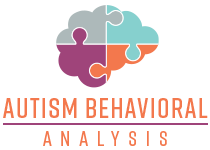The terms high functioning autism, autism spectrum disorder, and autism behavioral analysis are often misunderstood. You may know someone with autism. Or you may face autism in your own family or children. And given the rapid increase in autism cases, it is important to further your understanding of these terms.
What Does ‘High Functioning Autism’ Mean?
The term “high functioning autism” is not an official medical diagnosis. Instead, people use it to describe those with autism capable of handling basic life skills. It can be confused with Asperger’s syndrome, another condition that falls under the spectrum.
In the past, medical experts only considered people with severe symptoms to have autism. It was in the 1990s when they begin to recognize milder forms of this condition. High functioning autism is among the new forms accepted.
But in 2013, the American Psychiatric Association classified disorders related to autism in one term – autism spectrum disorder (ASD). But some people still use the previous terms.
Levels of Autism
Instead of using the term high functioning autism, the APA divided ASD instead into three levels reflecting the severity of symptoms. These different levels include:
- Level 1: Level 1 is the mildest level, with symptoms that don’t usually interfere with the individual’s school, work, or relationships. People with high functioning autism fall into this category.
- Level 2: People at this level of autism need more support. They likely have speech disabilities and problems socializing. Early intervention for autism at this level can dramatically help.
- Level 3: As the most severe level, people with this type of ASD need the greatest support and attention. Often, they need intensive therapy or full-time aides.
Determining ASD Levels
Diagnosing autism is already hard, so determining the ASD level can be even more tricky. There is no single method or test to accomplish this task. A doctor will have to conduct several screenings, observations, and interviews to get to know the individual.
Their goal is to determine the person’s verbal and emotional development. Their diagnosis and evaluation also assess the social and emotional capabilities of the person. Even their nonverbal communication skills are considered.
Early intervention is crucial. If you already notice some differences in your child’s development, don’t hesitate to make an appointment with a specialist to learn more about autism treatment for children and teens.
Treatment for High Functioning Autism and Other Levels of ASD
Just like how there’s no single test for diagnosis, there is no single approach to treating ASD. It’s also important to note that there is not any cure for autism. What the medical community has right now are therapies and other interventions to help cope with challenges.
On that note, the typical autism spectrum disorder treatment program includes:
- Medication: There is yet a specific medication to cure ASD. However, there are types of drugs that can manage some symptoms, such as hyperactivity and depression.
- Applied Behavior Analysis: This behavioral treatment is meant to encourage an individual’s positive behaviors through the use of a reward system.
- Physical therapy: For people who have motor disabilities, physical therapy can help.
- Speech therapy: Many people with ASD have different speech issues. Speech therapy for children with autism can help them address such problems.
- Occupational therapy: An occupational therapy program is a treatment that can help people with ASD learn how to use their hands and other parts of the body more efficiently.
- Sensory training: This training helps those with hypersensitive with lights, sounds, and touch. Sensory training helps patients become more comfortable with the senses they’re most sensitive to.
There Are Options That Can Help
Many parents feel terrified when they hear their child may have autism because there are undoubtedly many difficulties ahead. But don’t worry. Whether your child has high functioning autism or a more severe case, reaching out to a specialist can make a huge difference.







